Introduction
The Ravano family had purchased their first steamships shortly before the First World War. Driven during the inter-war years by Pietro Ravano, they proceeded to become one of Italyʼs larger tramp operators. This article describes the familyʼs fleet development from 1913 up to 1945, the post-war development of Piero Ravanoʼs fleet until he ceased business in 1973 and Alberto Ravanoʼs Italian fleet, operated successfully until he retired in 1993. In case of doubt there was no family connection with Angelo Ravano of Lavagna who, in 1968, had launched Contship Container Lines.
In 1946 Alberto Ravano, then aged 54, created Tidewater Commercial Co. Inc. (Tidewater) in the United States. Initially operating a 1902 built part passenger ship, given the name Tidewater, and some former U.S. colliers, a large fleet of dry cargo ships and tankers, placed under the Panama and Liberia flags, was managed by Tidewater until closing in the mid 1980s. A second article will describe the creation of Tidewater and explore its fleet development.
Early Days
The pioneer family steamship owner was Giuseppe Ravano whose first ship was the 1901 built former Etonian, purchased in 1913 from the Cambrian Steam Navigation Company (John Mathias) of Aberystwyth and renamed her Pietro after his father. After she was sunk by gunfire from the German submarine U-35 near Cape Palos, Spain, on December 23rd, 1917, while on a voyage from Genoa to Gibraltar, Giuseppe passed the familyʼs fleet development to Pietro Ravano, son of Marco. In 1918, together with Andrea Corrado, he had created the firm of Ravano & Corrado which by 1921 had purchased seven ships including the 1900 built Marwarri, renamed SantʼAndrea (below). he firmʼs last acquisition was the 1918 Govan built War Cowslip, renamed San Pietro. However, as the partners were by 1922 developing independent interests, that ship was transferred in 1925 to Corradoʼs new partnership with Emanuele V. Parodi while the Ravado and Corrado partnership was soon liquidated. The Parodi and Corrado partnership lasted until 1929 when, once again, their fleet was split and both went on to become substantial shipowners post-War.
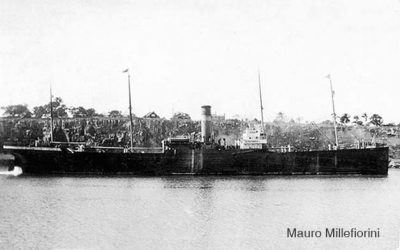
The 1900 Clyde built Vermont, renamed Liberta, the first ship to be owned by Unione S.A. di Navigation, a company created in 1922 by another Ravado family member, Piero, was also sold to Parodi & Corrado in 1924 without change of name. In turn Unione had in 1927 purchased from Pietro Ravano his Fidelitas, a ship built for Indra Line in 1901 as Indralema.
One of the Ravano & Corrado partnershipʼs early purchases, the 1917 Belfast built War Trefoil, renamed San Giuseppe, was transferred without change of name to the sole ownership of Nova Genuensis. S.A. per l’Industria e il Commercio Marittimi, a new company created in 1922 by Alberto Ravano with Angelo Dufour as president.In September 1941 the San Giuseppe was seized at Norfolk, Va. by the United States Government. Renamed Aneroid under the Panama flag, she was torpedoed by a German U-boat in October 1942.
The first ship purchased by Alberto Ravano for his Nova Genuensis company had been the Fidelitas, built in 1900 as Chulmleigh and purchased in 1922 from Lloyd Royal Belge, which was sold to Yugoslavia in 1926 to become Drina. Giving most of his ships names of virtues in Latin ending ʻ..asʼ, Nova Genuensisʼs last ship was the 1951 built coaster Veritas, sold in 1959.
In 1924 Alberto Ravano created another company, Societa per Azioni Industria Armamento (SAIA), immediately transferring into its nominal ownership from Nova Genuensis the 1900 Irvine built Humilitas, the former Lindenhall, which was unfortunately wrecked in January 1929.
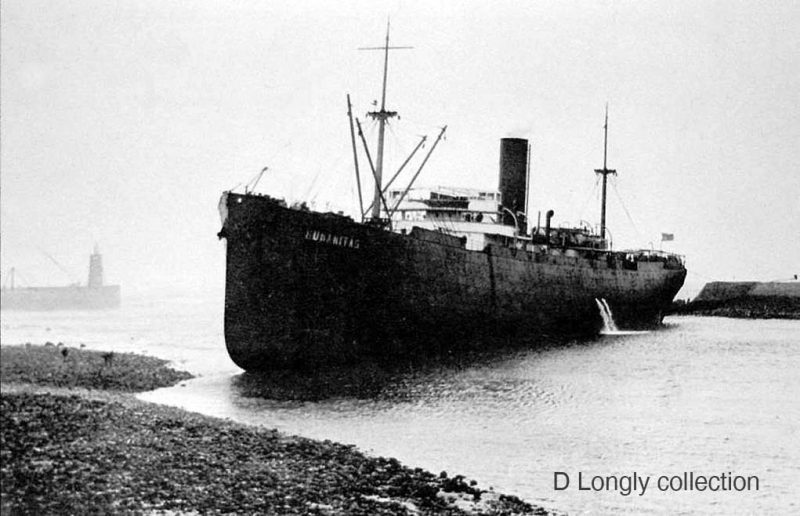
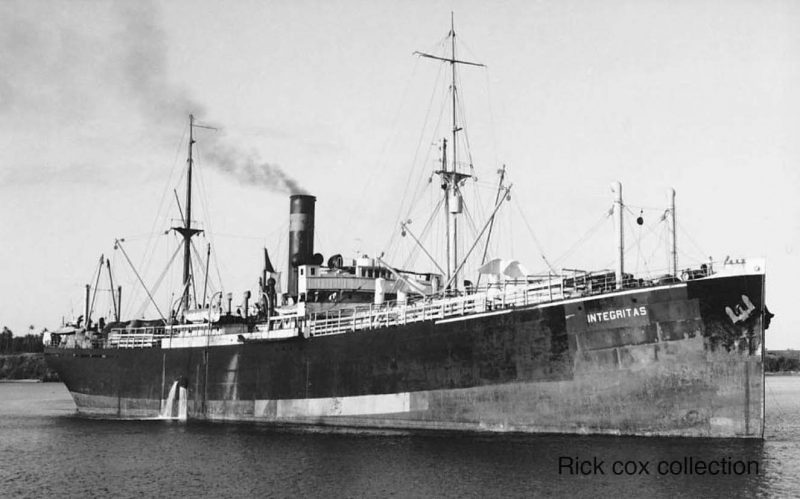
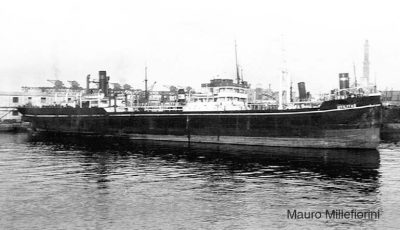
The Companyʼs next ship, Humanitas, the former Anglo-Saxon of 1902, then ran ashore at Hartlepool in 1930 (above). However this subsidiary continued to be used to purchase many further ships, both before and after the Second World War. In 1928 several Ansaldo built and named ships and the 1917 Riva Trigoso built Angelo Toso, renamed Integritas (above), were purchased from Societa Nazionale di Navigazione.
One notable World War II built ship was the Companyʼs only newbuilding, again named Humilitas, which was delivered in June 1943 by the Odero-Terni-Orlando operated yard at Muggiano near La Spezia which later became owned by Ansaldo. On 11th September 1943 she was torpedoed by the Dutch submarine Dolfijn while en route from Bastia to Sardinia with a cargo of munitions.
In 1928 Alberto Ravano created another company, Mare Nostrum S.A., purchasing seven ships before War broke out and using the same ship naming policy. Two Ansaldo built ships were broken up in the mid 1930s, and a tanker sold to Greece, while the remaining four ships were all War losses. In 1941 Mare Nostrum S.A. was taken over by Piero Ravano.
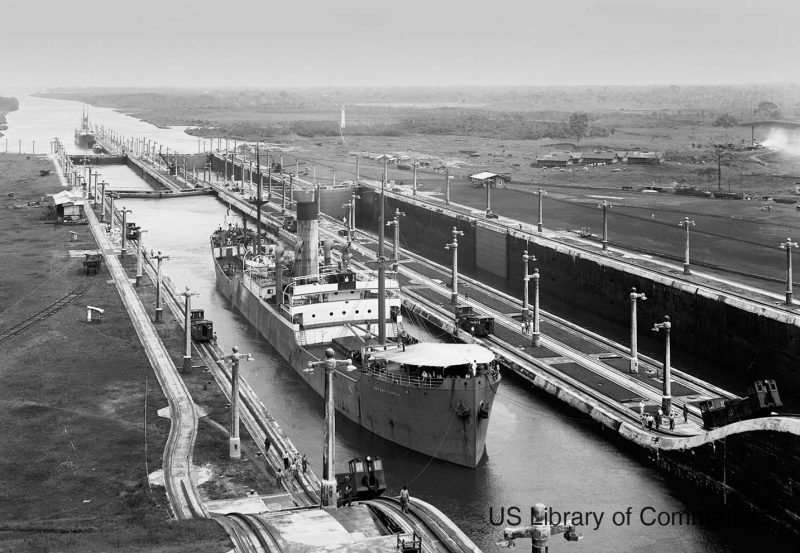
Perhaps the most notable of Mare Nostrumʼs ships was the 1914 built Fidelitas, the former Bolton Castle (above) of the Lancashire Shipping Company, which was acquired in 1939 but interned at Corunna on 10th June 1940, when Italy entered the War, soon moving to El Ferrol. In March 1942 she finally sailed for Bordeaux under German control and Hansa management, loading a cargo of iron ore at Bilbao. Sailing in July 1942 for Rotterdam, and then Bergen, she was then used to transport cargo between Hamburg and Norway until 8th September 1943 when, following the announcement of the armistice between Italy and the Allies, she was seized by German forces and transferred to the Reichsverkehrsministerium (Ministry of Transport). Then used between Denmark and Norway with a mixture of, still mainly, Italian seafarers plus some German officers and Ukrainian crew, she was bombed and torpedoed by British planes at Sulafjord, near Aalesund, on 27th November 1944.
Soc. Anon. Adriatico Tirreno Jonio (Ionian) Ligure (ATJL) di Alberto Ravano e Figli (and sons) was then created in 1934, it seems to operate coastal services. This Companyʼs first ship was the small Docilitas, built at Campbeltown in 1900 as Eider for the Royal Mail Steam Packet Company, but she was bombed at Genoa in May 1944.
Piero Ravano
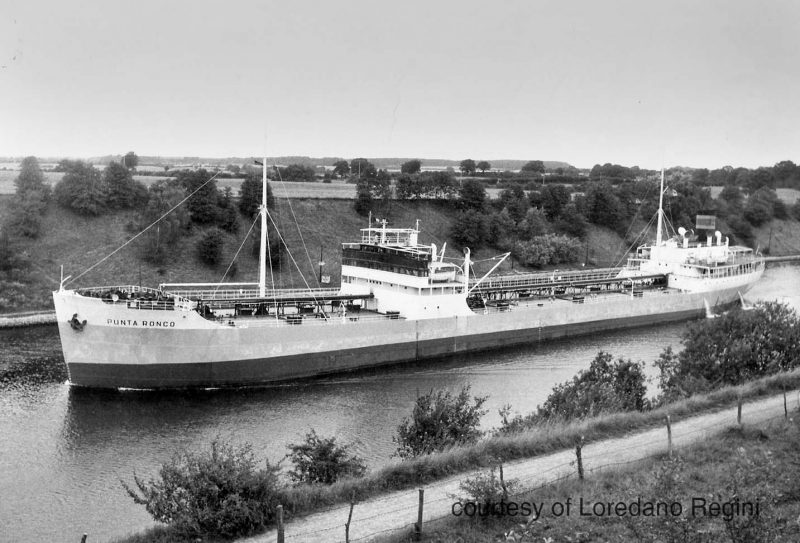
As mentioned above, in 1941, Mare Nostrum S.A. was taken over by Piero Ravano, operator since 1922 of Unione S.A., whose post-war ship naming policy was Punta (Point). A new tanker, built by Ansaldo in 1946, followed in 1952 by the 1939 built tanker Trondheim, were acquired by Mare Nostrum to respectively trade as Punta Vagno and Punta Ronco (above) until broken up in 1965.
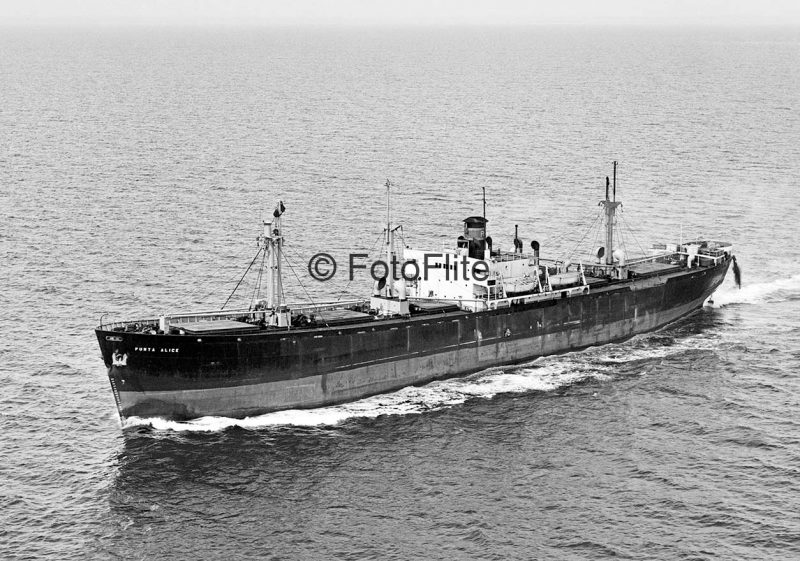
In the name of Giuseppe Ravano, the Liberty ship David Hewes was acquired by Piero in 1947 and given the name Punta Alice (above). She was sold in 1964 to John N.Vassilou who traded her as Ispahan until a troubled voyage to Newport and Liverpool in mid 1969 ended with her sale to Spanish breakers.
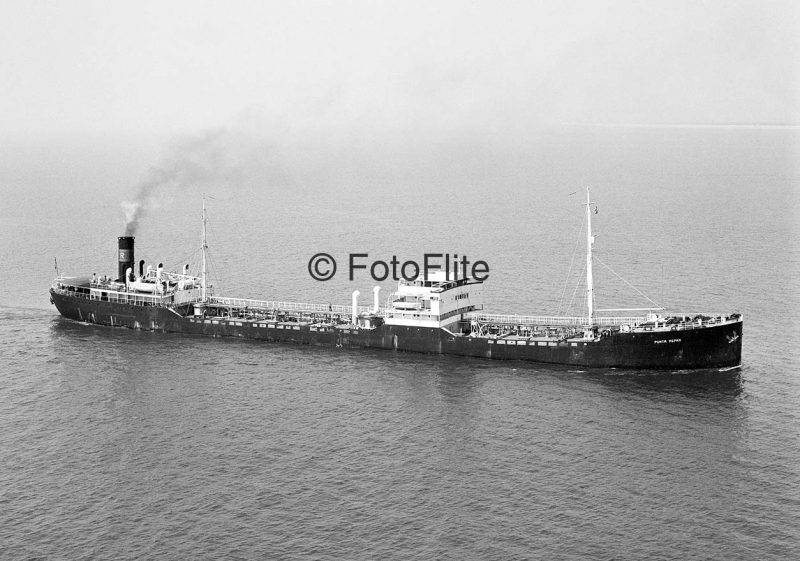
In 1951 another tanker was acquired in the name of Giuseppe Ravano. Named Punta Aspra (above), she had been built in 1928 as Turicum for Tschudi & Eitzen but was seized by German forces at Oslo in April 1940. Renamed Ill, she had been found at Brunsbüttel on 7 May 1945 in a partly sunken but repairable condition and was returned to her owners. Punta Aspra was broken up at Genoa at the end of 1958.
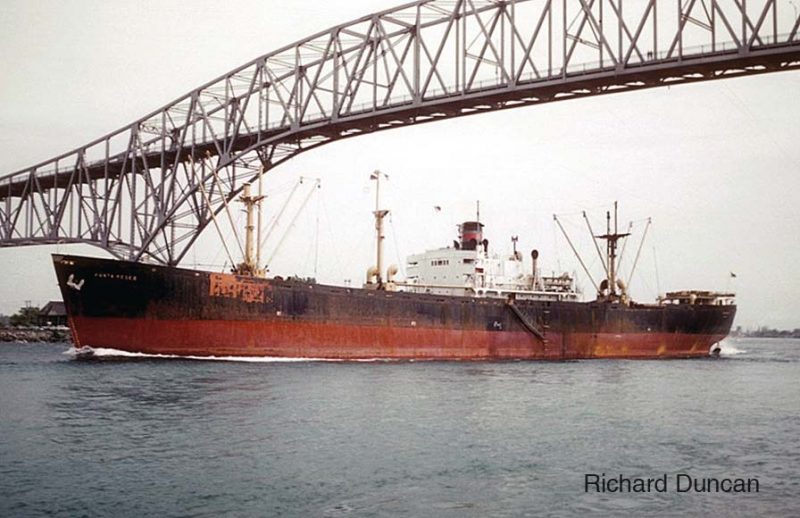
Meanwhile, in the name of Unione S.p.A., Piero Ravano had in 1947/8 purchased three standard War built ships. These were the Liberty type Punta Mesco (above), the Fort Fork, renamed Punta Amica, and the Tuxedo Park, renamed Point Aconi and oddly retaining her Canadian flag until 1958, all of which traded on until the early 1960s.
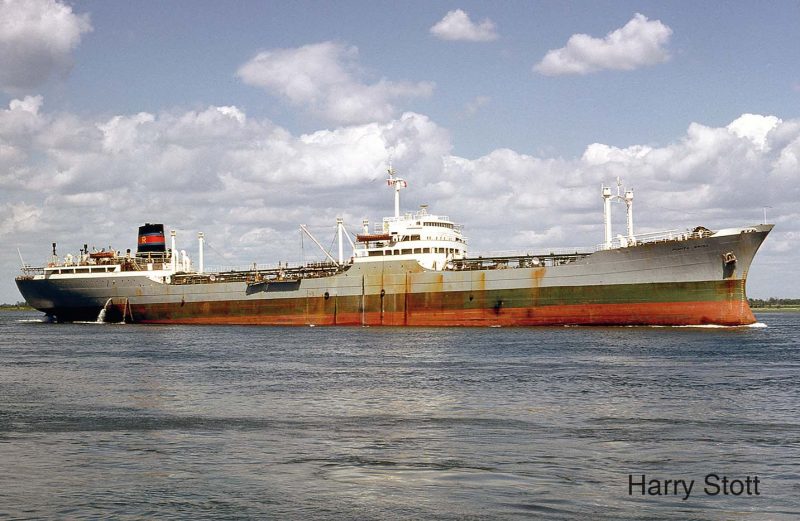
In 1954, in the name of Soc. Trasporti Transatlantici SpA, Piero Ravano took delivery from Ansaldo of the tanker Punta Spiga (above), trading her until sold in 1970 to the Paris based P.G.Troianos to operate as Gibleh until broken up at Gadani Beach at the end of 1972.
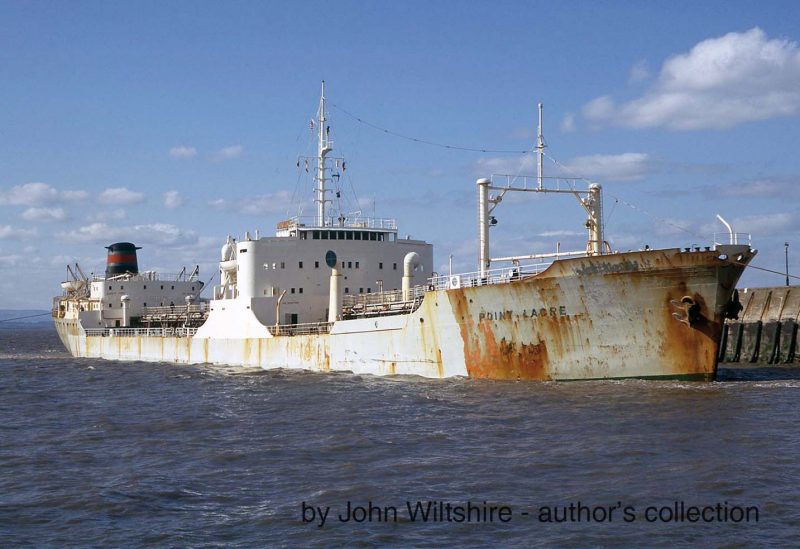
This was followed in 1958 from Uddevalla of the Liberian flagged tanker Point Lacre (above) which was sold in mid 1973 to Morfini S.p.A. of Bari. The ship then traded as Egnazia until sold for breaking at La Spezia where she arrived on 13 August 1982.
Finally, in 1962, again in the name of Giuseppe Ravano, Piero purchased from French owners the tanker Anjou, renamed Punta Cervo, which in 1970 was transferred to Soc. Trasporti Transatlantici SpA. This tanker was sold in mid 1973 to Fenice S.p.A. di Nav. of Palermo and was broken up at La Spezia in 1976.
Alberto Ravano Post-War Italian Fleet
Alberto Ravanoʼs fleet had been decimated during the War, with only two vessels surviving:-
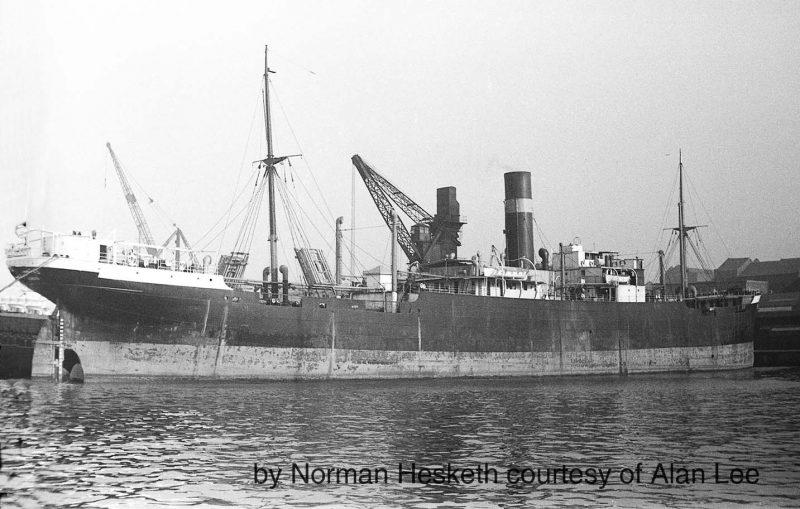
- Societa per Azioni Industria Armamento (SAIA)ʼs 1907 built Voluntas (above) which had been seized at Necochea on 25 August 1941 to operate as Rio Teuco until returned in 1946. She was sold to SOARMA in 1949 and renamed Volunta but was wrecked April 1955
- Nova Genuensisʼs 1916 built Aequitas which had been seized by the Brazilian Government on 22 August 1942 and passed to Lloyd Brasiliero for operation as Recifeloide until returned in 1950 to become Aequitas I and then Severitas (above), scrapped at Boʼness in 1954
Alberto Ravanoʼs 1919 built Amabilitas, which was seized at Bahia Blanca and then operated as Rio Bermejo, was used as a pilot vessel from 1947 until at least 1949 and not returned. The 1918 built Auctoritas was seized by the Brazilian Government in December 1942 but, as Pelotaslóide, was torpedoed by a German submarine on 4 July 1943.
His Italian flagged fleet was then slowly rebuilt by 1952 with the following purchases:-
Ravano name |
Former name |
Built |
Former owner |
| Auctoritas | Herman Frasch | 1920 | Union Sulphur, New York |
| Amabilitas | Henry D.Whiton | 1921 | Union Sulphur, New York |
| Aequitas II | Conrad Kohrs | 1943 | United States Government |
| Humanitas | Claus Spreckels | 1943 | United States Government |
| Utilitas | Chickamauga | 1943 | United States Government |
| Charitas | Corinth | 1943 | United States Government |
| Humilitas | Hedvig I | 1908 | Gunnar Kjøde, Bergen |
| Fidelitas | Vulcanus | 1907 | K.N.S.M., Amsterdam |
| Bonitas | Yearby | 1929 | Ropner, West Hartlepool |
| Honestas (note 1) | Delia | 1918 | Industrie Navali S.A., Genoa |
| Trinitas (note 2) | Thomas P.Beal | 1921 | Eastern Gas & Fuel, Boston |
| Serenitas II (note 3) | Giuan | 1918 | Industrie Navali S.A., Genoa |
Note 1: Honestas was the first ship to be nominally owned by “Ausonia” del Fratelli Ravano di Alberto, a company created in 1952.
Note 2: The ATJL fleet was expanded after the War for deep sea trading starting with the 1921 built Trinitas being transferred from Tidewater in 1949 and operated until 1954.
Note 3: Serenitas II, purchased by ATJL in 1950 from Industrie Navali S.A., as Giuan, had been seized by the United States Government at Norfolk, Virginia, on 8 December 1941 to operate under the Panama flag as Gallant Fox until returned to her owners in 1948. She was broken up in 1952.
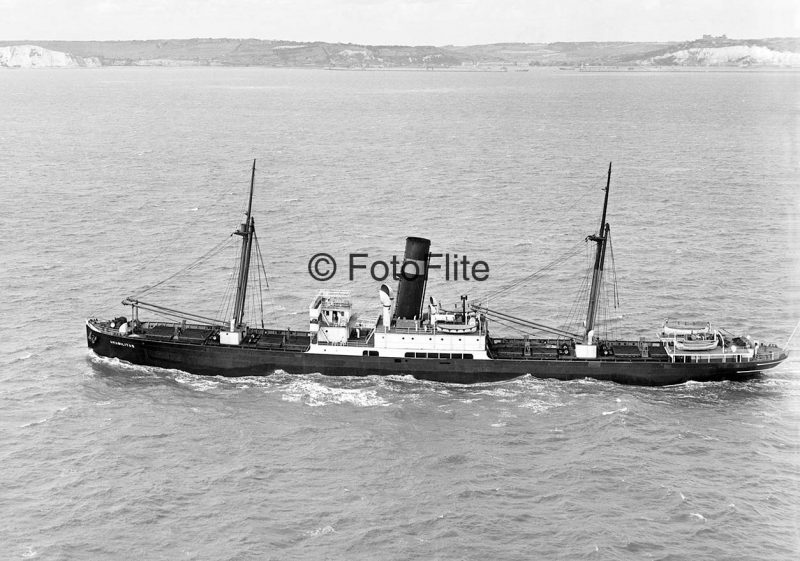
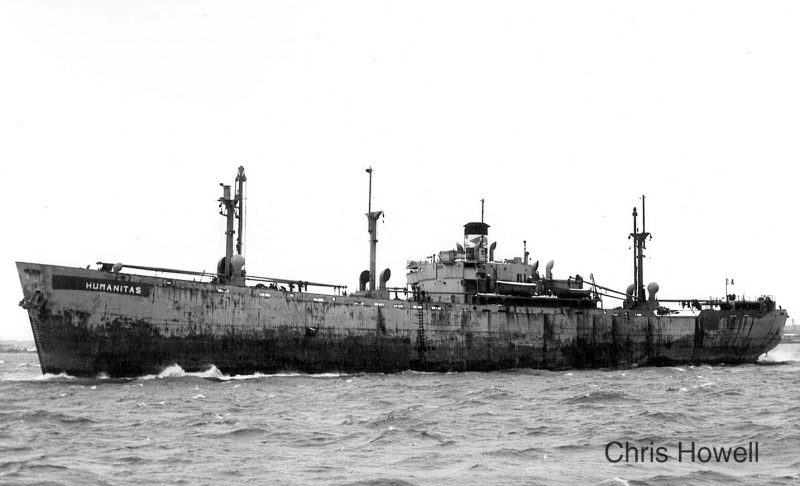
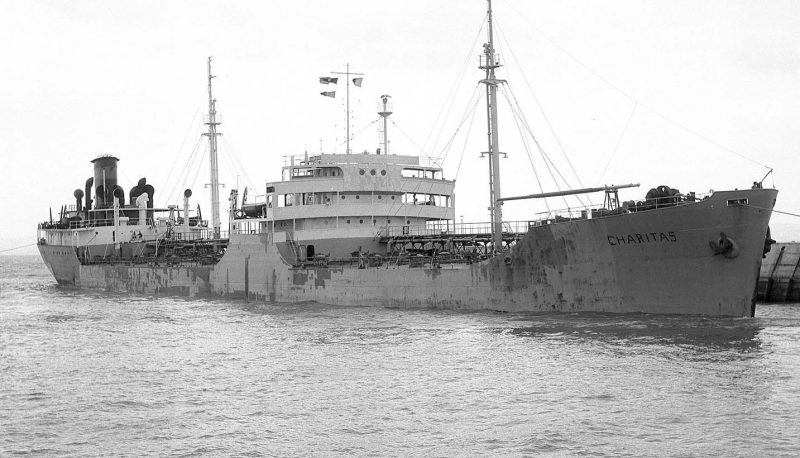
The T2 tankers Utilitas and Charitas (above) were broken up in 1961 and 1965 respectively.
Humilitas and Fidelitas (above) were sold in 1952 while Bonitas (below) foundered in February 1958 during a voyage from Macapa, Brazil, to Baltimore with a cargo of manganese ore.
Twenty one crew members including eight from Liguria sadly lost their lives.
Following the sale in 1956 of the 1918 built Honestas (above) she was replaced in 1958 by a Liberty ship, given the same name (below) and traded until 1964, briefly supplemented by sistership Serenitas in 1960/1.
A further
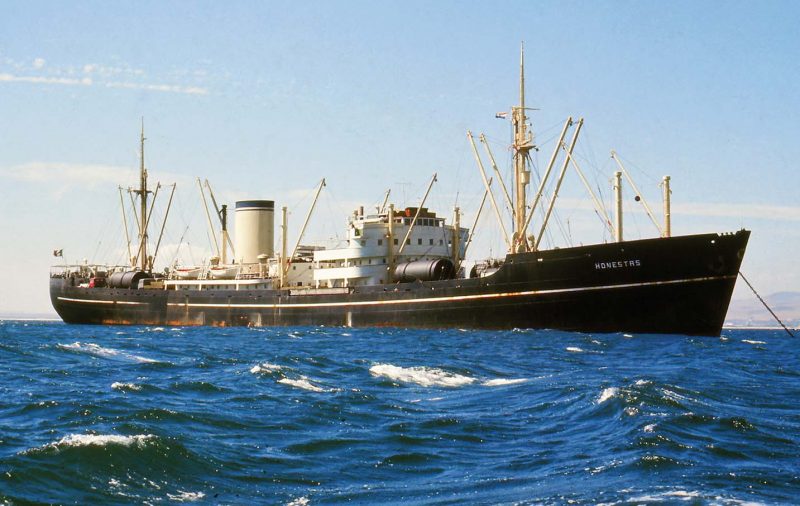
(below), the 1948 built former Kina of Danish East Asiatic, which had operated in 1968/9 as Serenity for Transatlantica de Nav.S.A., whose ships were managed by Alberto Ravano, was purchased by Ausonia in 1969.

The SAIA fleet had been partially rebuilt in 1946 with the first four of the vessels listed in the table. The Liberty ships Aequitas II and Humanitas were traded until 1962, supplemented from 1960 by sistership Cinan (above). Following her sale in 1964, the 1955 Haverton Hill built tanker Karmt was purchased from H.M. Wrangell of Haugesund and operated as Utilitas for ten years until sold for breaking at La Spezia.
Then, in 1976, SAIA then purchased from other Italian owners the 1955 Monfalcone built tanker Brezza (above) which suffered a fire at Messina on 19 September 1982 and was towed to La Spezia for breaking, arriving there on 17th October 1982.
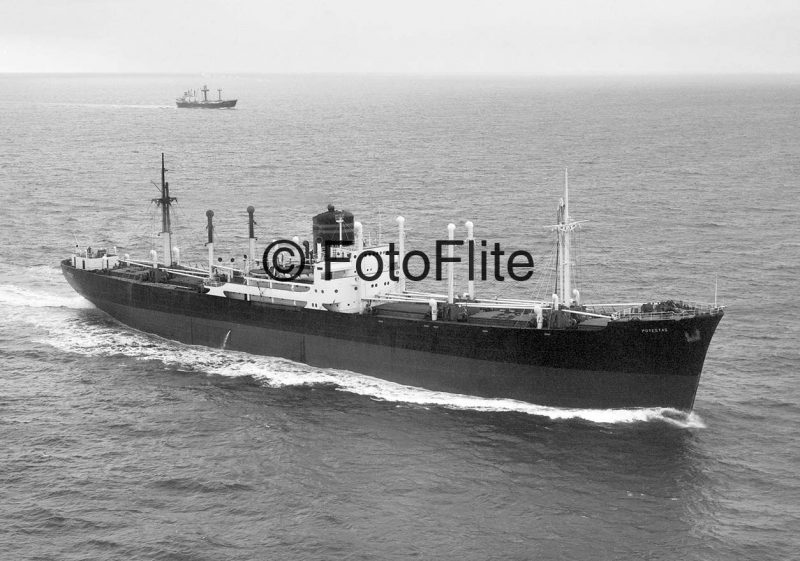
The ATJL fleet was further expanded from 1953, starting with the 1929 built Potestas (above), the former Forthbank, traded successfully until sold to Hong Kong breakers in June 1959.
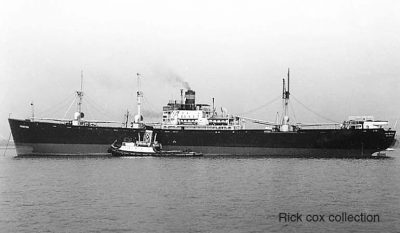
The Liberty ship Probitas (above) was purchased in 1954, lasting until 1968 after being transferred to SAIA in 1964.
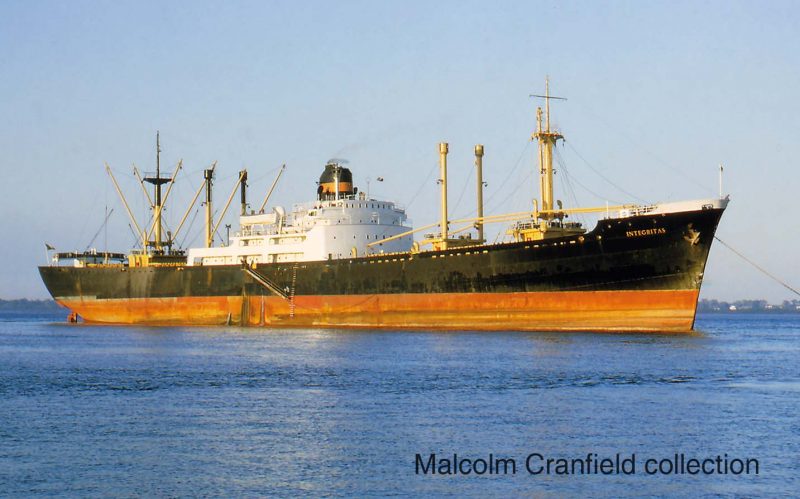
Then, in 1956, a newbuilding from Taranto was allocated to ATJL. Named Integritas (above), she was transferred to SAIA in 1969 before being sold to other Italian operators in 1975 after breaking down in West African waters where she was renamed Gazza while under repair.
Similarly the Taranto built bulk carrier Auctoritas (below), completed in 1959, was nominally owned by ATJL until sold for breaking in 1979.
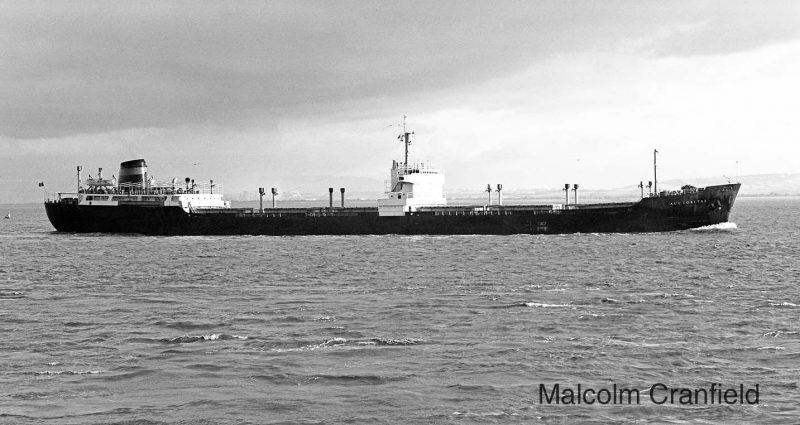
Finally, Tidewaterʼs 1951 built tanker Clydewater was transferred to ATJL in 1968 to trade as Charitas (above), remaining in the fleet until broken up at La Spezia in November 1977.
As mentioned above in connection with the Honestas (ex Kina), Alberto Ravano had also managed the ships of Transatlantica de Nav.S.A. whose fleet comprised two Liberty ships purchased in 1966, the Boulogne which lasted until 1968 and the Avranchoise which survived until 1970, followed in 1968 by the Serenity (later Honestas) and finally the tanker Calais (above) which was broken up in Spain in 1976.
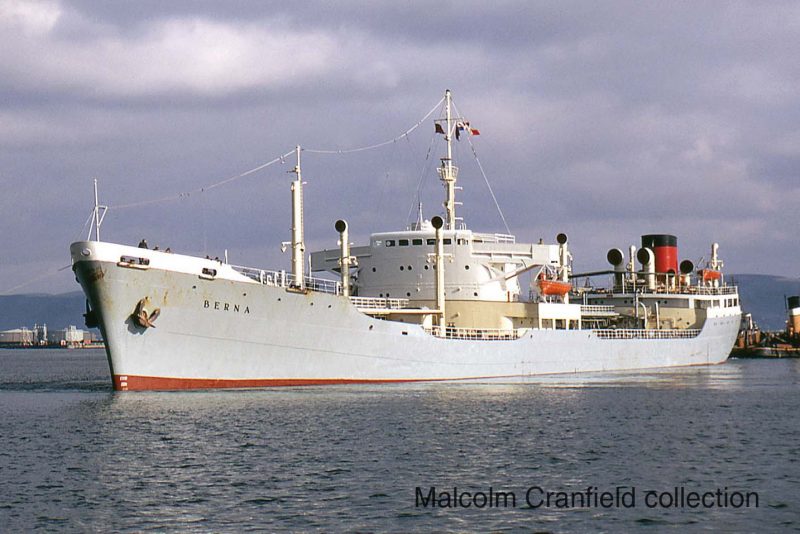
The 1952 built tanker Berna (above), initially owned by the Chur based Delphinia Soc. di Nav. Marittima, but purchased in 1961 by Lunmar S.A. of Lugano, was managed by Alberto Ravano on behalf of Annie and René Dollfuss and the well-known Dr. Waldo Riva (1905-1987) from Lugano, a lawyer, politician and high army officer. Launched on 24th July 1952 with her homeport Basilea, she was delivered under the Panama flag and lasted until 1975. It is understood that her engine had been manufactured in 1938 for the Swedish passenger liner Stockholm which, as Sabaudiua, had been bombed at Trieste in 1944 and broken up in 1949. The Sabaudiaʼs other two engines were placed on two similar Italian tankers.
In 1968 the Lunmar fleet was expanded with the purchase from Mitsubishiʼs yard at Nagasaki of a large new tanker named Spes. Again managed by Alberto Ravano, she was managed by his Tidewater Commercial Company Inc. subsidiary from the late 1970s until sold for breaking in 1983.
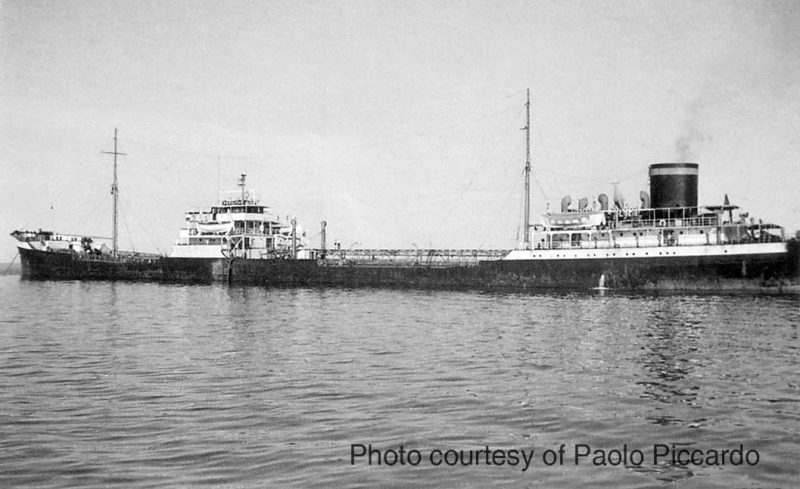
Meanwhile in 1955, in the name of Esperia di Nav.dei Fratelli Ravano di Alberto, the Dutch owned,1938 Odense built, tanker Barendrecht was purchased to trade as Humilitas (above next column) but almost immediately resold to Norwegian owners to become Ariel. Finally, as the New York owned Gem, she broke in two in an Atlantic storm on 8th March 1962.
Later, in the nominal ownership of the Palermo based Polarsicula SpA, the 1951 built tanker Rosa Maersk was purchased in 1963 by Alberto Ravano and given the name Polluce. She was sold in 1967 to Swiss principals to trade as St.Patrick, and then Allobrogia, before heading east in 1969 and becoming the Indonesian operated Permina 104. Her sale in 1967 had allowed the newly purchased Fernhaven to take her name Polluce.
Albis Ardua S.p.A. di Navigazione, another Alberto Ravano owned company, formed at Palermo in 1961, was initially tonnaged with the tanker Humilitas, built at Odense in 1947 as Fernpark for Fearnley & Eger of Oslo. Renamed Polare, she traded locally from 1964 until broken up at La Spezia in 1976. She was replaced by a new Humilitas, a 1953 Odense built tanker, the former Finnish Wirma built for French owners as Brumaire, which had been originally purchased in 1972 for Ravanoʼs Ausonia company. She again traded only locally but suffered a fire and explosion off Naples on 5th May 1981 and was towed to La Spezia for breaking.
The Albis Ardua fleet was boosted in 1966 by the purchase of the larger tanker Berge Sigval, built at Gothenburg in 1957, which as Alcaid (above) had latterly traded in United States waters before her sale to Taiwan breakers in 1978.
Meanwhile, early in 1972, the Honestas (ex Kina) was transferred from Ausonia to Albis Ardua to trade as Honor before her sale to Taiwan breakers in March 1973.

Transferred in 1973 from Tidewater Commercial to Albis Ardua was the 1961 Ansaldo built tanker Silverspring. Renamed Panormus (above), she was sold to Taiwan breakers in April 1976 and replaced in 1977 by the Voluntas, built for Norway in 1957 as Pepita.
Voluntas (above) was followed in 1978 by a new Humanitas. This was a 1957 Nagoya built tanker, delivered to Jebsens as Tornes, which since 1965 had operated as the German owned Bomin, and sold to Pakistan breakers early in 1982. Following the sale of their Liberty ship Honestas in 1964, Ausonia was briefly without a ship until the 1953 Port Glasgow built tanker Tuareg was purchased from Wilh.Wilhelmsen in 1965. As Sobrietas (below) she unfortunately suffered storm damage when 400nm from Land’s End on 5th February 1970 and, after putting into Swansea for repairs, proceeded to Vinaros, north of Valencia, for breaking, arriving there on 18th March 1970.
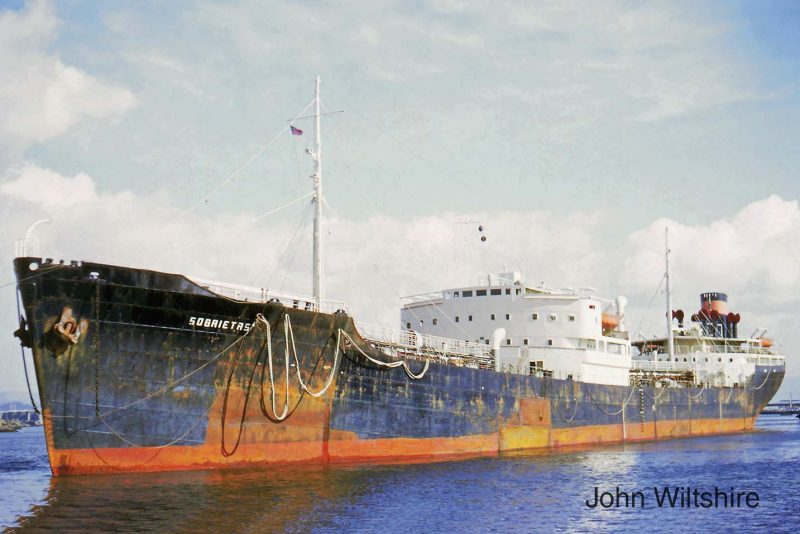
She was replaced in 1972 by the 1953 Odense built Humilitas (below) which, as mentioned above, was transferred to Albis Ardua in 1976.
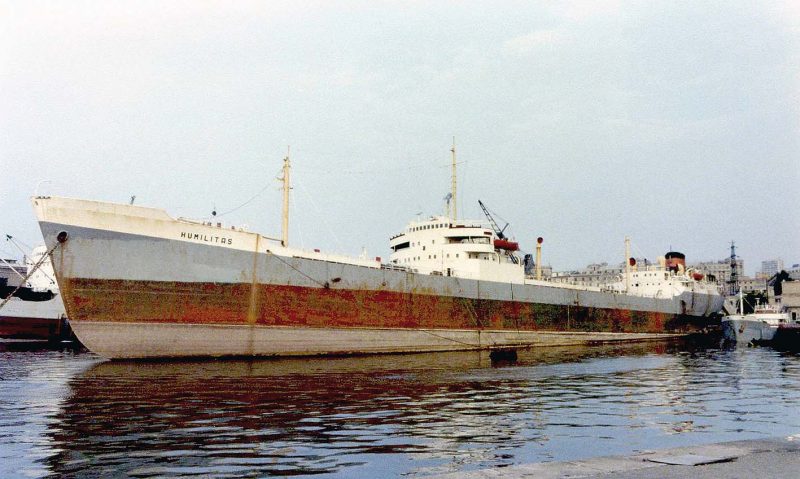
Alberto Ravano sadly passed away in 1970 at Monte Carlo (Principality of Monaco) where he had long been a resident. From 1966 his son Carlo has been a member of the Board of the Yacht Club and has been its commodore since 2003.In 1971 his sons established in the principality a new company named Société d’Etudes et de Gestion (S.D.E.G.) to manage the 1957 built bulk carrier Las Minas, newly acquired from Navimar S.A., plus the newbuilt tanker Sealion, owned by Alcino Soc. Di Nav.Marittima of Lugano. Subsequently S.D.E.G. managed most of Ravanoʼs non-Italian ships, albeit in conjunction with the family ʼs Baltimore based Tidewater Commercial until its closure in about 1984. Navimar S.A., established in Lugano by Cornèr Bank in 1954, had placed the management of most of its ships in the hands of Carlo Cameli of Genoa, fleet manager to Italnavi Societa di Nav per Azioni (Italnavi).
In 1982 SAIA amalgamated with Albis Ardua and Transmarittima Sarda Italnavi Flotte Riuniti SpA which itself was a 1974 amalgamation of two companies, Transmarittima Sarda and Italnavi, to create Nova Industria Armamento SpA (Nova).
SAIA had contributed to Nova the Brezza and a new Serenitas (above), built in 1960 as Østhav and purchased in 1981. She was sold in 1983 to the Ravenna based Misano di Nav. S.p.A. to trade as Indiano until sold to Spanish breakers at the end of 1984.
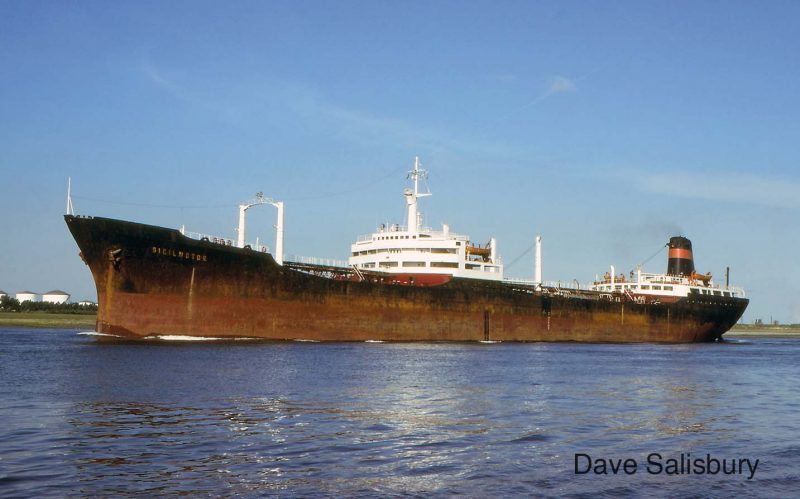
Albis Ardua provided to Nova the tanker Voluntas which served the new fleet until early 1986. Italnavi had brought to the joint venture the 1958 built tanker Sicilmotor (above), the 1974 built bulk carrier Italmare and the 1978 built bulk/oil carrier Punta Mesco, which had been purchased in 1980 from Navigazione Arenella SpA, a subsidiary of Soc. Ligure di Armamento, while Sarda had provided the 1958 built tanker Polluce (below), the former Fernhaven purchased in 1971 from Marsud of Palermo.
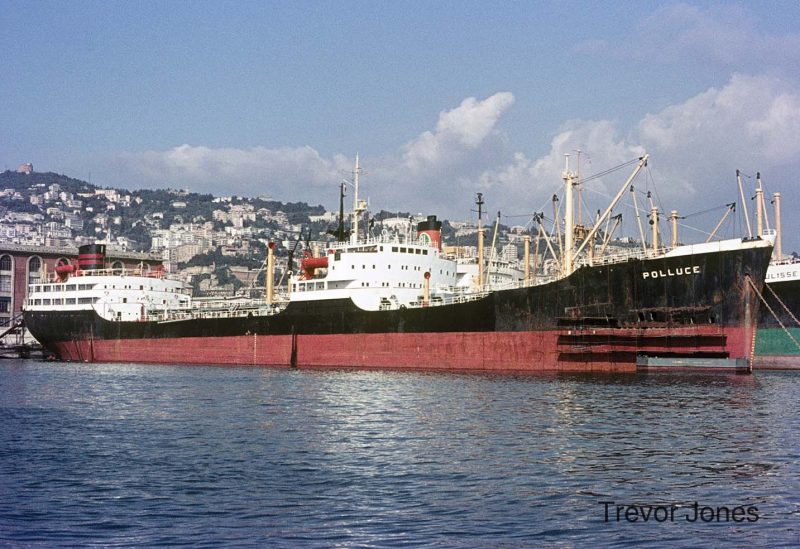
Marsud was another Ravano subsidiary which had originally purchased the ship in 1967 along with the 1939 built dry cargo ship Potestas which was scrapped in 1971. This latter ship, built at Monfalcone in 1939 for SIDARMA as Vettor Pisani was attacked and sank near Argostoli on 24th July 1942 but was raised and repaired, returning to service by September 1952. Later in 1982 Nova acquired three 1965 built tankers from the BP Tanker Company with the British Ivy (below) taking the name Charitas, British Poplar the Utilitas and British Holly the Humanitas.

However, by 1986, the Humanitas and all of Novaʼs other ships had been sold and the family began trading under the new name of Franconia S.R.L.

At that point the 1969 built British Fidelity (above) was acquired and simply renamed Fidelity (oddly not Fidelitas).
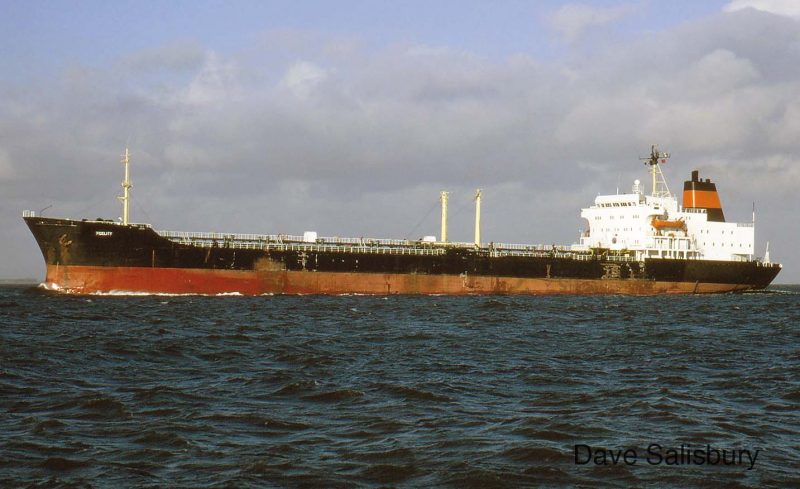
In 1990 the Fidelity was sold and replaced by the 1971 built Rodosea of Tsakos Shipping & Trading, which had been built at Kiel as Roland Essberger, again renamed Fidelity (above).
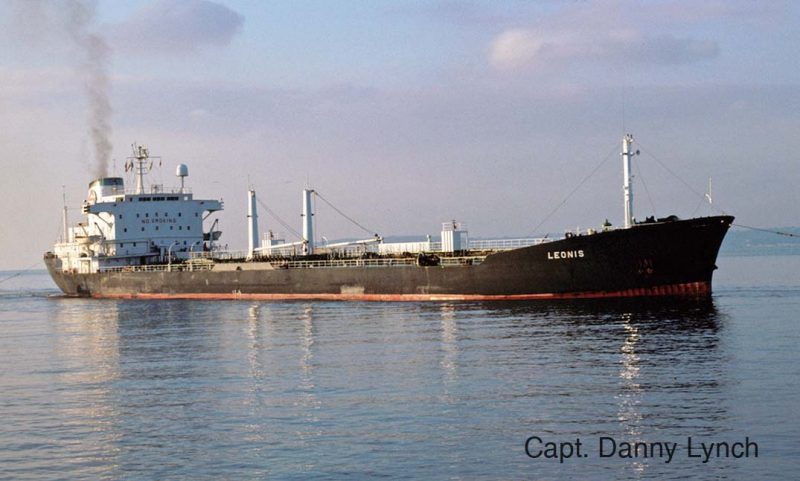
Two more tankers were acquired in 1991 while the Utilitas was renamed Alcantara. The newly acquired ships were the 1969 Sunderland built Leonis (above), the former Laurelwood, purchased from Soc. Italiana Marittima Srl of Ravenna who had bought her in 1986, and the 1972 built Ascot from Société d’Etudes et de Gestion (S.D.E.G.) of Monte Carlo. S.D.E.G. had between 1984 and 1992 operated a small number of ships on its own account, starting with the 1968 built bulk/oil carrier Victory III until her sale at auction in 1987 and including the Ascot between 1988 and 1991.
The Ascot had been purchased in 1988 from London Greek owners who had traded her since 1981 as the Aquarius. Built by Swan, Hunter at Hebburn as Joseph R.Smallwood for Nile S.S. Co Ltd and managed by Common Brothers, she had been renamed Afghanistan in 1976 and then Newburn in 1980 before being sold to Off Shore Oil Services (UK) Limited, a company part owned by Kulukundis family.
Franconia S.R.L. sold its remaining four ships in 1993. Alberto Ravanoʼs nephew, also named Alberto, became a dry bulk trader and subsequently Director of the Lugano based Bulk Trading S.A., of which he is currently the President. It is reported that one of the ships in which he was involved in sourcing cargoes after 2000 was the 1977 built Bulk America, owned by B.Navi S.A. (Enrico Bogazzi) of Marina di Carrara.
It was said in 2008 that, in arranging shipments of coal of up to 8 million tons p.a., Alberto Ravano and Bulk Trading were to coal the equivalent of Bruno Bolfo and his company Duferco (established in Lugano in 1979) were to steel. However since 2008 commodity trading has been more difficult with the trader Carbofer General Trading declared bankrupt in 2012. Meanwhile Massimo Bolfo, former CEO at Duferco, started his own company, Trasteel International S.A., in 2009. B.Navi S.A. then ceased business in April 2015. Alberto Ravano and Bulk Trading however continue to prosper.
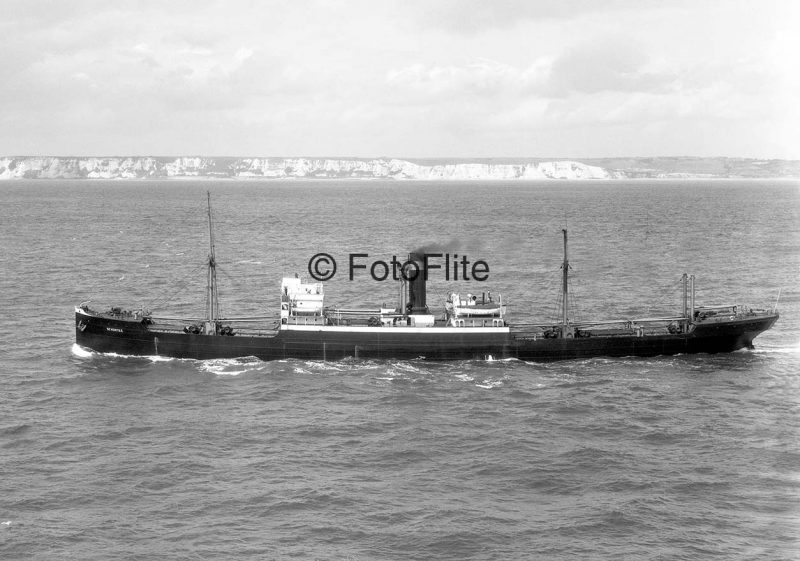
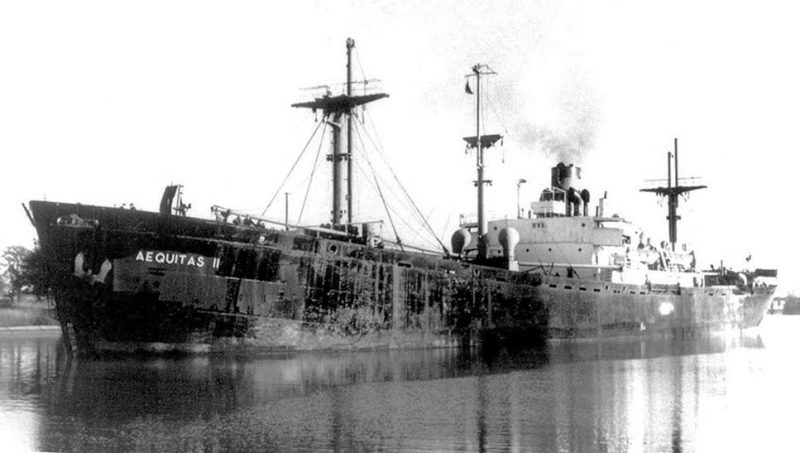
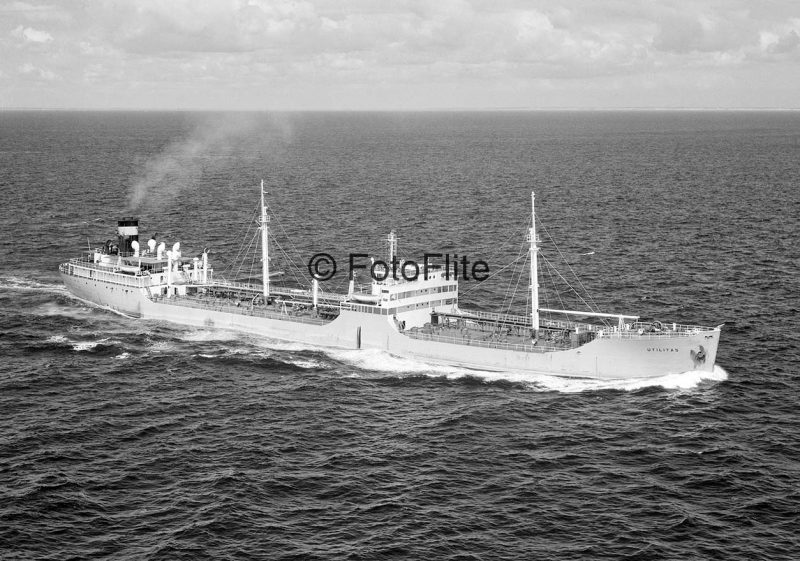
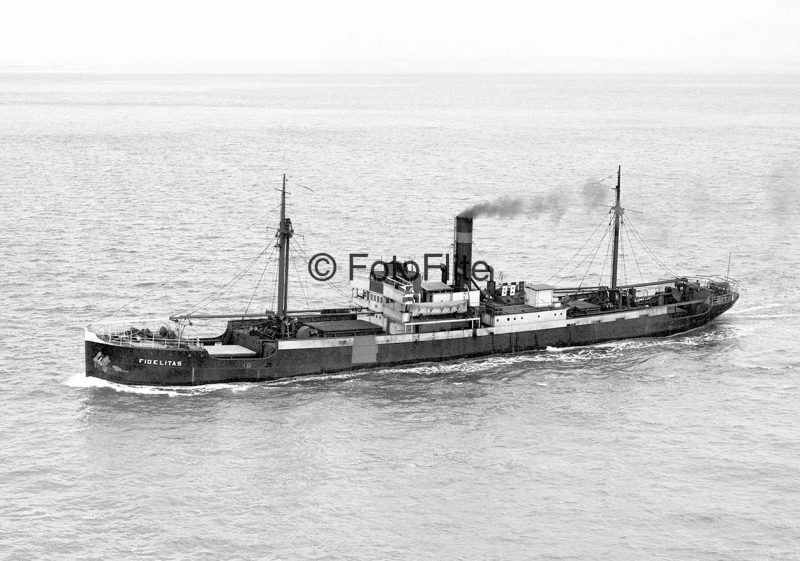
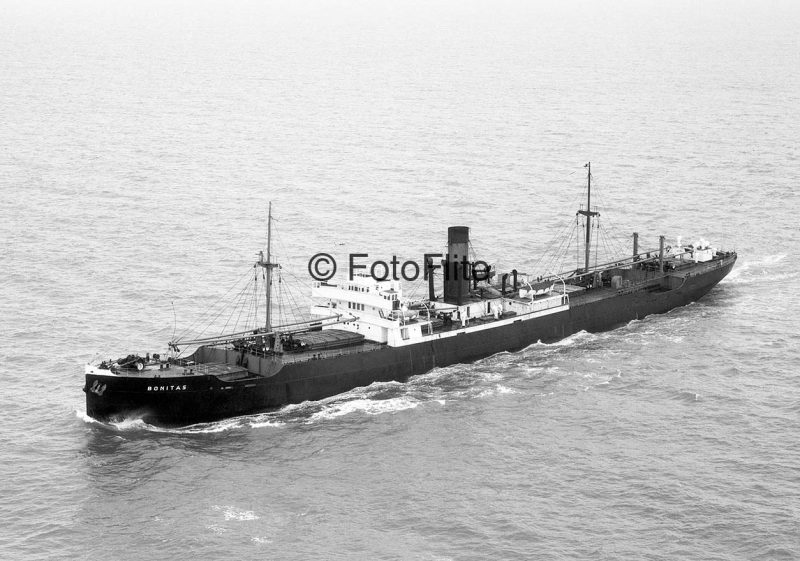
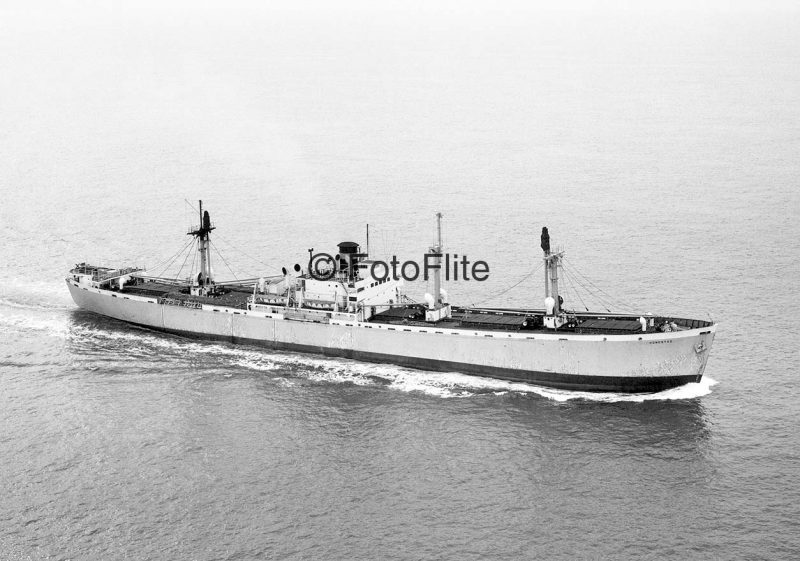
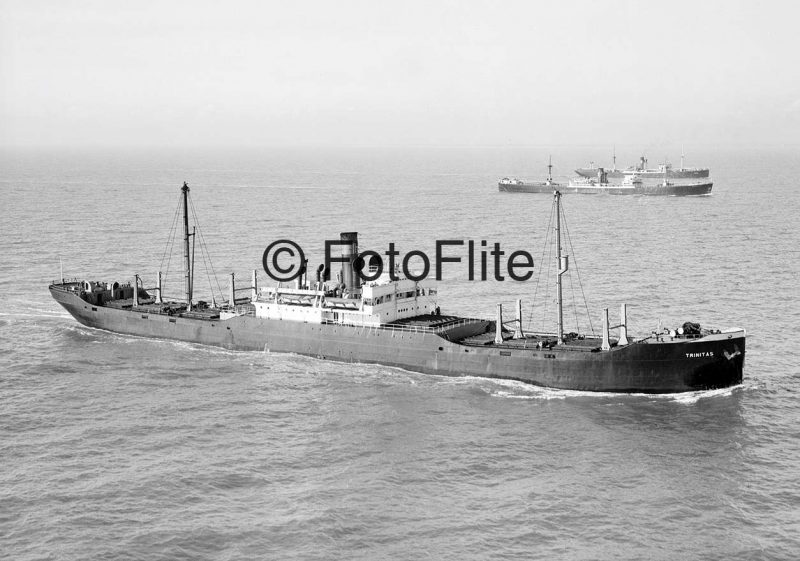
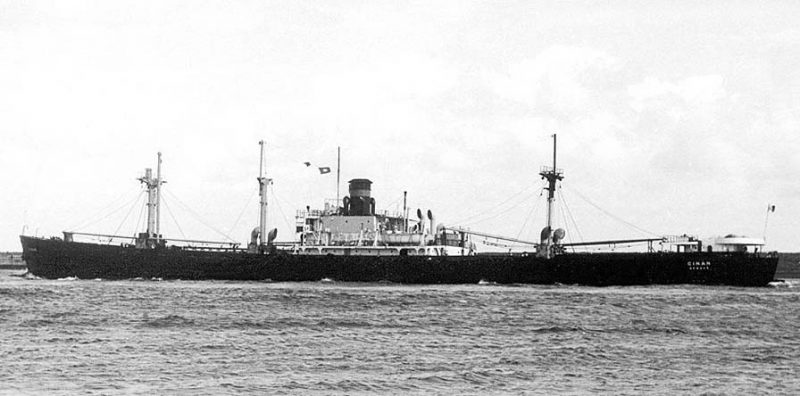
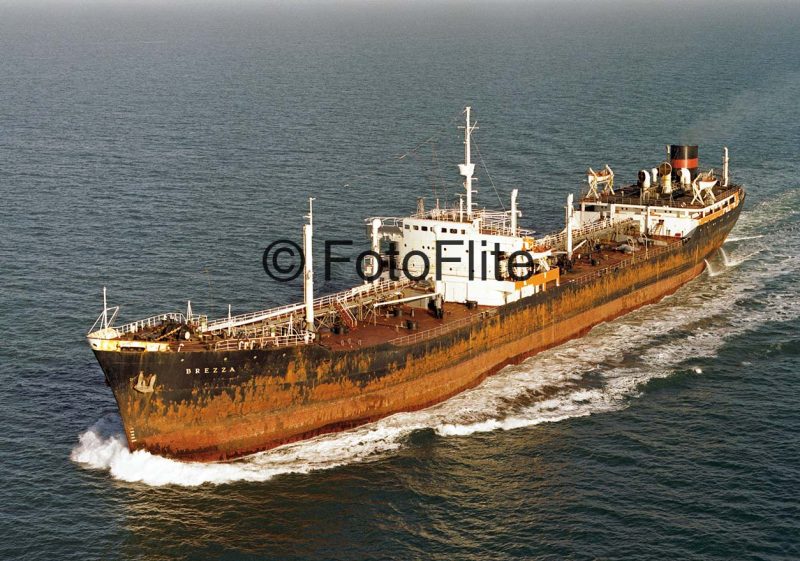
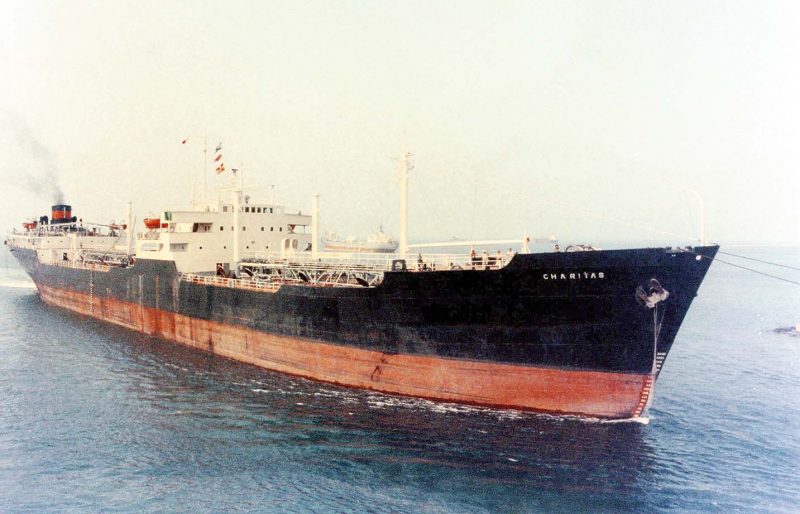

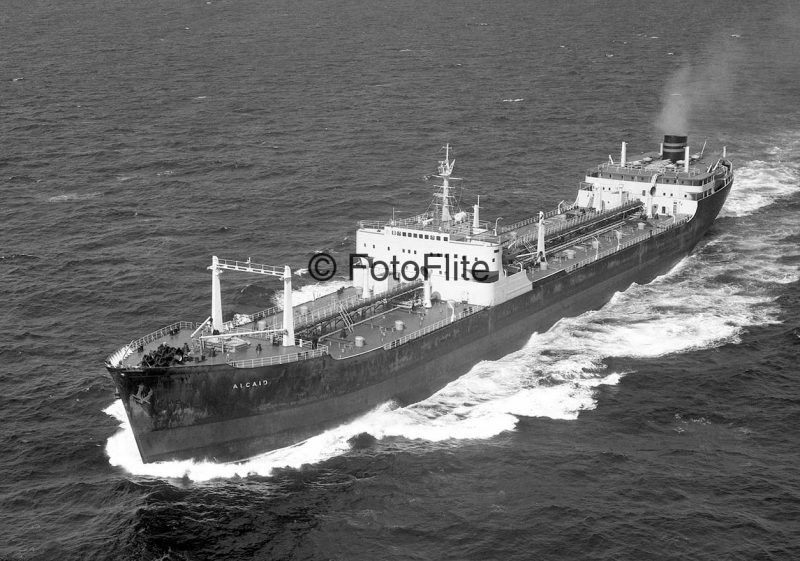
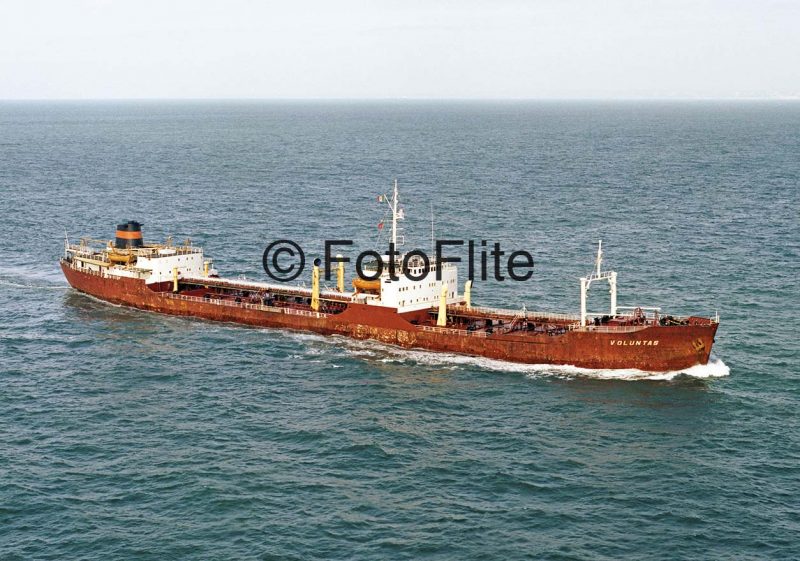
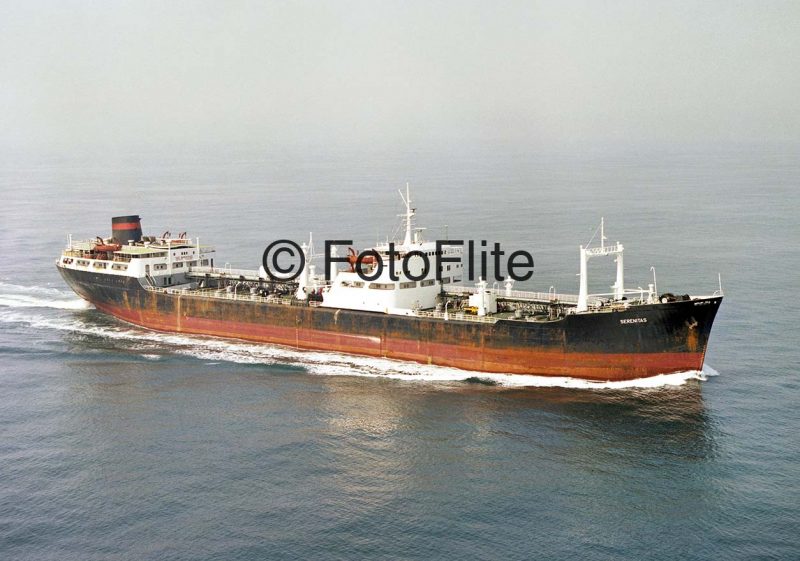
Comments
Sorry, comments are closed for this item